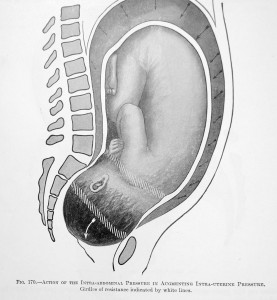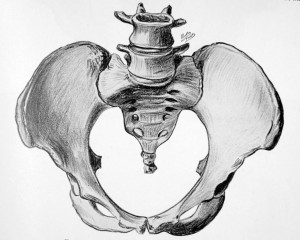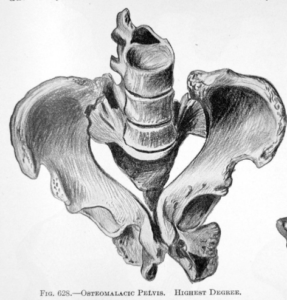Easy-to-share link: https://tinyurl.com/y3rbgdet
Part 3
But first, a brief synopsis of part 2
Obstetrics — Before and after the rise of modern medical science
 Scientific obstetrics remains one of the most important medical miracles of all times.
Scientific obstetrics remains one of the most important medical miracles of all times.
Before childbearing women and newborns had access to modern obstetrical medicine and equipped hospitals, simply being a childbearing woman was a terribly dangerous job, one that too often ended in tragedy.
The reasons were many, some related to maternal health and others to the low standard of living and the socio-economic hardships that regularly afflicted most Americans, especially for ethnic minorities and new immigrants.
Being poor and a childbearing woman doubled your chances of dying prematurely, often as a result of your gender-related biology.
Day 3
The Bad Old Days ~ Childbirth before the scientific practice of medicine & discovery of antibiotics
Imagine for a minute living in a world with no pharmaceutical drugs, where blood tests for anemia and infections didn’t exist, no x-ray or ultrasound machines (certainly no MRIs), no pasteurization of milk products and the Germ Theory of infectious disease hadn’t yet been discovered.
The majority of working class people couldn’t afford to go to a doctor. But even if you could, and he (doctors back then were all male) made a brilliant diagnosis of your problem, there simply were no effective and safe treatments for your infection, gallbladder disease, complications of pregnancy or childbirth, etc.
This pre-scientific stage of medicine was unique for having a very high level of skill at diagnosis, while having almost no ability to treat the disease they’d so cleverly named.
 After saying “my dear, I’m afraid the news is not good. You have breast cancer”, there was no treatment. All doctors could do was assure doomed woman that he wouldn’t let her suffer any more than he could help, and promise to provide her with opium syrup (paregoric) for the pain until the very end.
After saying “my dear, I’m afraid the news is not good. You have breast cancer”, there was no treatment. All doctors could do was assure doomed woman that he wouldn’t let her suffer any more than he could help, and promise to provide her with opium syrup (paregoric) for the pain until the very end.
Very sad.
Common Childhood illnesses of the last century that turned into a nightmare for adult women
Of the many maternal health-related issues of this era, one of the worst and yet most common was rickets, which decalcifies bones and makes them so soft they bend under the body’s weight. This disease, which can make childbirth deadly, is caused by a lack of sunlight, which in turn results a vitamin D deficiency. Its consequence in many childbearing women was a potentially-deadly pelvic deformity in which the pelvis collapses in on itself.
 Normal Healthy Pelvis |
A “contracted pelvis” is what happens when child-labor laws (i.e. or lack thereof) lock up kids as young as 8 years old inside a windowless factory while they hunch over dangerous machines 12 hours a day, 6 days a week making shoes or milling cotton or tiny souvenir American flags that sold for a nickel.
The severest form of rickets results in an obstructed labor that goes on for days, until the baby dies and has to be removed in pieces with a very long and sharp crochet hook. Not infrequently, infection and shock from the many vaginal exams, multiple failed attempts to deliver the baby with forceps, or surgical extraction of the fetus after its death takes the mother’s life as well.
Missing in action: Prenatal care
While little known, an important fact about our current maternity care system is that routine prenatal care was not invented until the early 20th century. Before that, doctors and midwives did not meet their pregnant patients for the first time until woman was already in labor and often in an advanced stage.
Doctors and midwives knew almost nothing about the mother’s state of health and her medical history before being called to attend her birth. As a result, there was no system for detecting high-risk pregnancies prior to active labor. This was particularly an issue for pregnant women with very high blood pressure and a pregnancy-related condition known as “toxemia” or “preeclampsia”. Typically this potentially fatal condition went undiagnosed until the mother-to-be started having convulsions during labor. Untreated toxemia is often fatal to both mother and baby.
One of the reasons for not having a prenatal risk-assessment system before the 20th century is that before the development of modern medicine, there was little or nothing, the doctor could do that would have changed the sad or bad outcome.
During this pre-scientific, pre-antibiotic period, Scarlet fever was a common but untreatable childhood illness that often left its victims with a damaged heart. This was worsened by the strain on the woman’s body when she was pregnant. The effect on her unborn baby was a lack of oxygen that often caused it to be stillborn. In extreme cases, the laboring mother also died while straining to give birth.
Another condition that made childbearing potentially deadly was an untreatable infection that damaged the young woman’s kidneys. This resulted in very high risk pregnancies that often ended badly for both.
Deadly Effects of common-place Social, Economic Factors and Low Standard of Living, circa 1900
Social and economic factors of the late 1800s and early 1900s also made childbearing much more dangerous. This included bias against the lower-class in general and non-white Americans and immigrants in particular. As a result, poor working women were forced to slave away in factories or sweat shops in extremely unsanitary conditions in, doing work that was physically dangerous and/or exposed them toxic chemicals, and standing on their feet 12 hours a day, 6 days a week.
Effective contraception (birth control) was not legally available in all states until a 1965 ruling by the US Supreme Court (Griswold vs. Connecticut). In addition, married women did not have the legal right to refuse their husbands, so the typical married woman in 1900 had an average of 12 pregnancies, 9 live births but only 6 living children. The physical toll on the childbearing woman’s body was captured in the common folk wisdom of that era, which was that women lost at least one tooth for every pregnancy.
But poverty and being of the female gender was, and continues to be, a particularly deadly combination all around the world, even in the good old U.S. of A.
Thankfully, a lot (but not all) of that all changed during the first half of the 20th century.
The bright light of obstetrical science sweeps away the Bad Old Days!
 For the first time in human history, medical science had the knowledge and technical skills to reliably prevent or successfully treat the great majority of pregnancy and childbirth-related complications.
For the first time in human history, medical science had the knowledge and technical skills to reliably prevent or successfully treat the great majority of pregnancy and childbirth-related complications.
This includes antibiotics to treat infections, drugs to stop hemorrhage, better anesthesia, blood-typing which made blood transfusions safer and sterile surgical techniques that made Cesarean deliveries a reasonably safe choice.
Since antibiotics became available in the mid-1940s, many hundreds of thousands of maternal and newborn deaths and permanent disabilities were prevented by the miracles of modern obstetrical medicines and the many dedicated obstetricians that made it all work.
Childbearing in Modern America ~ much better for many reasons!
When we compare the health-related circumstance of pregnancy and childbirth today to that of a hundred years ago, the news is very very good.
The number of childbearing women who need extreme obstetrical interventions has dropped 10-fold or more.
 For many encouraging reasons, we are a much healthier, wealthier population. Society in general is far better educated, and most of us are employed in jobs that are far safer than 100 years ago. We are paid well enough to live in places that have clean water and sanitary sewer systems; our homes keep us warm and dry.
For many encouraging reasons, we are a much healthier, wealthier population. Society in general is far better educated, and most of us are employed in jobs that are far safer than 100 years ago. We are paid well enough to live in places that have clean water and sanitary sewer systems; our homes keep us warm and dry.
We get more than enough to eat, and for the most part have access to medical care when needed. While most people don’t understand why, the dramatically higher level of safety for contemporary childbearing women is a direct result of effective prevention or treatment of children illnesses. As a result, the kind of chronic ill health like rickets, Scarlet Fever, kidney infections, which used to be so common in the early 1900s and had such devastating consequences, is virtually unheard of today.
Most American women are in the bloom of good health when they reach their adult childbearing years. This makes them ever so much less likely to need highly interventive obstetrical services than was the case 100 years ago.
When the miracles of modern medicine and greatly improved standard of living in the second half of the 20th century, the result is a truly remarkable drop in the number of unhealthy childbearing women, high-risk pregnancies, premature births, maternal and perinatal mortality and all the circumstances that in the past resulted in tragedies and preventable deaths of new mothers and newborn babies.
The obstetrical profession has every right be proud of itself. Certainly the American public is eternally grateful for their inventiveness, surgical skills, compassion and for not giving up on us when we needed them most.
However, the past glory of scientific obstetrics is just the beginning of this story, and one that leave us with a number of big burning questions.


